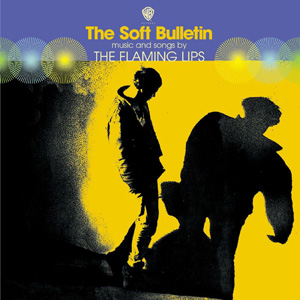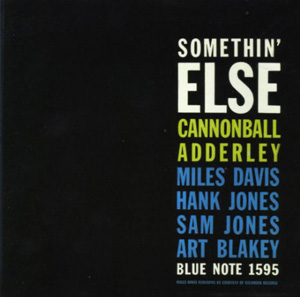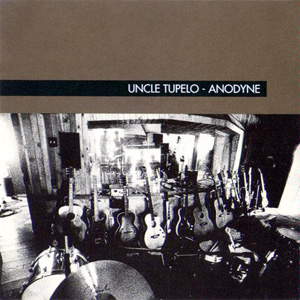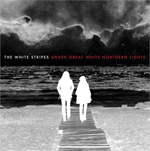The Flaming Lips “The Soft Bulletin” Warner Bros
- Performance:

- Sound:


There’s something about the Flaming Lips that their fans can’t get enough of. And, while I can’t say that I know any hardcore, diehard Flaming Lips fans personally, I know that they’re out there and that their numbers are great. I enjoy their music too. I respect what they’ve done and how they’ve done it. To say that they’ve played by their own rules would be a gross understatement. I don’t know what they’re highest charting song is to date, but I suspect that the bulk of their mainstream exposure took place over a decade ago when Beavis and Butt-head ran a commentary on their video for the song about Vaseline. I assumed they were a joke band at the time. I’m not sure that label would offend them even today. Humor is a big part of the appeal, I feel certain of that. But I’d have lost a gamble if you’d asked me to predict their level of success coming out of Oklahoma City in 1983. Oklahoma City in 1983 These guys Here we are more than 25 years later, and I’m about to write out some of my thoughts on 1999’s “The Soft Bulletin.” All this zipping around in time is enough to make my head spin. Kind of like listening to “The Soft Bulletin.” I mean that in a good way. I like it a lot. I’m a little surprised by that.
The first thing that you notice on “Bulletin” is the juxtaposition of lush orchestral arrangements with some really busy, wet-sounding power drums. These seemingly divergent textures actually create a cohesive, happy sound, and this record pre-dates today’s practice of throwing together as many disparate sounds as possible for the sake of having done so. A lot of thought went into this noise, and I get the feeling that lead singer, Wayne Coyne, has achieved a clarity of vision that the rest of us are still grasping for. The next thing that I notice, anyway, is that there’s a fascinating mixture of instrumental lightness and darkness of lyrical content happening. I don’t consciously set out to learn song lyrics, and I often don’t pay attention to them at all. I’m okay with most lyrics as long as they’re not actively offensive, and I could study these outright if I took the time to read the ones printed on the gatefold’s interior. I’d rather absorb them over time, which is my favorite way. A couple of images have jumped out at me already though, and they’re not all moon beams and cotton candy. I’m hearing things about poisonous spider bites and Superman failing. “Feeling Yourself Disintegrate,” and the Macy’s Day Parade. And that might be the most applicable image to this record. Aren’t those floats kinda spooky and happy all at the same time The Cat In The Hat hit a light post once and the fallout fractured a lady’s skull, leaving her in a month-long coma. The police had to stab a Barney float until it was flat to avoid the possibility of a similar outcome. I rest my case (thanks, Wikipedia). Those incidents haven’t scared off the Thanksgiving Day crowds, and the Lips’ fans have followed them down their worm hole too. Their live shows are legendary spectacles involving balloons, confetti, blood, and giant hands. I’ve never seen one, but I’d sure like to. These guys are a psychedelic oasis in a land of played out posturing. How can a sound this light survive in a time when you see so many pictures of upper middle class white people flashing gang signs on Facebook Where do the Flaming Lips fit in this culture (Has there ever been a record review with more questions in it ) I would guess that the Flaming Lips Nation finds some comfort in the bands acknowledgement of the darker underbelly beneath our sunny exteriors. We all have it. Might as well hold it up to the light every once in a while. There’s some rich artistic terrain to be mined down there. Just ask Wayne Coyne.
The vinyl re-issue of “The Soft Bulletin” is pretty flawless too. The two disc pressings are beautiful and the sound is amazingly clear given what’s happening musically. Some folks have called “Bulletin” the ’90’s “Pet Sounds.” I disagree, but I can’t imagine that it’s ever sounded more alive. This one was pressed at the German plant that folks are so nuts for now and the quality is superb as expected. But there’s one thing that I can’t understand from a fan’s perspective. I understand it perfectly from a business perspective. The record comes with a three-song CD of bonus tracks, but rest of the album is not on it! It’s like ordering a margarita and getting an empty glass with salt around the rim. We can acknowledge that the recording industry is struggling to adapt to new formats and the public’s changing practices at the cash register (or lack thereof). But this one just feels sleazy. If you’re going to go to the trouble of including a CD with the vinyl, you should put the damn record on it. This is a band that has mailed handwritten apologies to their fans in the past for mistakes that their label has made. They seem tuned in to what their fans want and the experience that they want to provide for them. I feel like they missed one here though. It’s bound to happen over the course of a 27 year career. That number’s pretty amazing. They’ve earned it. Three-song bonus CD and all. . .
Bloodkin “Baby, They Told Us We Would Rise Again” Sci-Fidelity Records
- Performance:

- Sound-vinyl:

- Sound-digital:


Finally! I thought I’d collect my Social Security before I’d ever own a Bloodkin record. And I mean record. I’ve scooped up every CD they’ve released since “Good Luck Charm” in 1994. Since then, they’ve produced some of the finest rock has to offer, and they’ve never let me down. In fact, they’ve made some of my favorite music of all time. They’re right up there in the “what albums would you want to have with you if you were stranded on a desert island” discussion. I’d say that “Ravin’ Beauties” might be my personal favorite ‘Kin album, but that – to me – is like trying to choose your favorite Stones record. How could you take “Let It Bleed” over “Exile” You gotta have both, and in my mind you’ve got to have the full Bloodkin catalog and appreciate it as a body of work. Anything less, and your rock and roll collection is lacking. The band added another jewel to their crown with last year’s “Baby, They Told Us We Would Rise Again.” And it’s on vinyl! Sort of.
Danny Hutchens and Eric Carter have been at this game for years. The fact that their music has gone largely unnoticed for the bulk of the band’s history is one of the greatest injustices in the history of entertainment. I’m not being dramatic. Bloodkin is one of the fiercest forces in rock and roll. I don’t take that lightly, and I’d like to make sure that we’re on the same page here. This is a rock and roll band. Not a rock band. My mind conjures horrible, nasty images when I think of the current state of “rock” music. I can’t discern any influences when I listen to what’s happening now. None that I’d care to identify (or identify with), anyway. Bloodkin draws from the deepest well: Hank to Chuck to Muddy to Dylan (in no particular order). Hutchens’ lyrical prowess is legendary amongst the comparatively few of us that have found our way to his life’s work, and his lifetime foil on guitar, Eric “Coondog” Carter, still employs the nastiest tone available. But I’m getting away from the issue at hand which is that “Baby, They Told Us We Would Rise Again” is a fantastic return to form from a band we almost lost. It follows an extended break that saw the boys transcend some personal issues that had hounded them for years, and it’s unfamiliar territory for me as a fan. I’m unaccustomed to hearing Hutchens sing about contentment and happiness (“Heavy With Child”) whether he’s being coy or not. The man can write the songs that make the young girls cry, and “Summer In Georgia” is a lovely ode to the simple acts that define our time spent with those closest to us. “Ghost Runner” finds the band in classic raunch regalia while “The Viper” addresses some of the demons that have garnered so much press of late. I fear that the attention that’s been focused on their hard living may have been better directed at the quality of their work. That’s where the real action is, and the proof is in the songs.
Here’s where things fly south a little, and I hate to have to report the following bit of news: Sci-Fidelity Records has botched the job on the vinyl release. I mean, bad. There are skips, the record is off center which causes warbling, the levels are low, it ate my homework, the list goes on. It has nothing to do with production or performance. Dave Barbe is unquestionably one of the finest producers of rock and roll albums, and that is evident on “Baby.” The band is in fine form, and should be proud of everything they’ve accomplished in the last few years, and on this record especially. I have it on good authority that there are better vinyl pressings of “Baby, They Told Us We Would Rise Again” on the way. Until then, the digital version is available via all of the usual outlets, including iTunes and Amazon. I recommend that you avail yourself of those resources ASAP, and pick up your digital copy rather than risking it with the vinyl version. I can’t believe I just wrote that. My fingers had a hard time finding the keys in the necessary order to have done so. And I think the Earth just tilted on its axis a little. . .
Julian “Cannonball” Adderley “Somethin’ Else” Blue Note/Classic Records
- Performance:

- Sound-vinyl:


I bought Classic Records’ mono re-issue of Cannonball Adderley’s “Something Else” a couple of months ago and couldn’t wait to get home with it. I hadn’t heard it since I was a kid, and wanted to know if it was as majestic as my memory kept saying it was. I put it on my record cleaner, threw it on the platter, put the needle in the groove, and settled in to my favorite chair for an active first listen. . . for about thirty seconds. That’s when I discovered the six loud ticks that disrupted “Autumn Leaves.” I didn’t bother with the rest of the record because I knew I wasn’t keeping it. Classic Records charges a premium for their products, and I wasn’t going to settle for a lesser experience than the one I’d paid for so I took it back to my local, independent retailer – and traded it for a Kenny Dorham record. The retailer didn’t get another mono copy in for a while so I waited until they did and pounced on it again. My feeling was that I was going to really enjoy this recording based on its place in history and the players involved. I didn’t realize at the time that it is one of my favorite albums in any genre of all time. I realize it now, though. There’s not going to be much objectivity in the following paragraphs. If you’re familiar with the record, you’ll know why. If you’re not, I don’t envy you. You should fix that. Immediately. I’m very serious.
“Somethin’ Else” seems to belong as much to Miles Davis as Cannonball Adderley. Miles takes the first solo, and Miles wrote the title song. “Somethin’ Else” is from 1958. Davis and Adderley obviously pleased themselves because they reconvened the following year to record Davis’s “Kind of Blue.” You’ve heard of that one, right Well, I think I might prefer “Somethin’ Else.” It’s all I’ve wanted to hear for a month. At this point, it’s a struggle to myself listen to something else. (Get it ) It’s the most relaxing music that I’m aware of, and at the end of the day (or during the day) I just want to relax. A bad mood can’t survive in the face of this level of artistry. The formula that I’m most familiar with in jazz is not as immediately apparent on this recording. The standard intro – theme – solos – theme structure exists here, but the theme is less synchronized from the players’ perspective. Typically, one player (often Davis) handles the theme unassisted before taking the passenger’s seat for his playmates’ solos. The title track blasts side two off with a neat little call and response from the two principles before Davis asserts himself without accompaniment. It’s a fun switch, and it’s one of many. For instance, I hear Latin influences in “Autumn Leaves,” but I might be nuts. I’ve certainly been called worse.
I’m not going to get too into details regarding the individual songs here. I don’t really see the point. They’re all sublime and they’re best enjoyed as a unit. Again, and again. I swear I listened to “Somethin’ Else” three times straight through when I finally landed a clean copy. If you’ve kept up with our vinyl reviews from the last couple of months, you’ll know my opinion regarding the Classic Records catalogue. Not only are they amongst the best sounding records out there, I also trust them as a reference when it comes time to buy jazz. They haven’t missed yet. I don’t know who chooses their rock releases, but they should take notes from their jazz department. (Peter Gabriel is probably a very accomplished artist. He doesn’t rock. Period.) One of my favorite moments on “Somethin’ Else” is when you can hear Miles Davis say “Is that what you wanted, Alfred ” at the end of “One For Daddy-O.” I don’t know who Alfred is. I expect he answered in the affirmative.
Various Artists “Local Customs: Downriver Revival” The Numero Group
- Performance:

- Sound-vinyl:


I have a profound appreciation for people that can play a pedal steel guitar. Because I can’t. I can handle the parts that require my hands, but I get a little flustered when trying to add my knees and feet to the mix. I’ve made this beautiful instrument sound like a train wreck more than once, and decided long ago to leave it in more capable hands, knees, and feet. Some churches use a pedal steel in place of the traditional organ during services. It makes perfect sense. Both are capable of producing sustained, soothing notes that can wash listeners’ troubles (and maybe sins) away for a time. Robert Randolph is today’s most popular pedal steel practitioner, but I can’t get into his playing, really. There’s not much difference between what he does and what a traditional electric slide guitarist does. He plays mostly single-note leads without any of the atmospherics traditionally associated with his instrument. At least, that’s what he was doing when I saw him a couple of years ago. I gave up on him a while back too.
The Numero Group has dug up some obscure recordings by the defunct Double U Sound label which was located just south of Detroit, and operated during the late ’60’s and early ’70’s. Felton Williams was the brains of the operation and he actually built (or modified) most of the equipment in the studio including the mixers and amps. He also played on a few of the songs. You’d think that the front cover would give you a little taste of what you’re in for while listening to “Local Customs: Downriver Revival.” It’s a photo of a smiling Williams playing his pedal steel along with a partner on electric guitar. They’re set up in front of an ironing board with a can of starch on it. There appears to be a bed next to that. This is not exactly the apex of recording technology. This is music based on feeling, and born of necessity. At least, that’s how I like to imagine it. The music in this collection is a little uneven, but it’s entertaining all the way through. I guess that’s about what you’d expect from a group of folks rocking out to some gospel recordings that they made in their laundry room.
Here’s the kicker: There isn’t a whole lot of pedal steel on these recordings that I can hear. This isn’t exactly false advertising on the Numero Group’s part. There’s no text on the cover advertising a sacred steel festival within the grooves. There’s very little text at all which is consistent with the rest of the label’s catalogue so far. Maybe I just got over-excited by the very thought of two records dedicated to the Sacred Steel Gospel tradition. Maybe I jump to conclusions without doing any research. Maybe I’m just over thinking the whole issue. I’ll get some play out of this set, probably in conjunction with the other Numero comps that I’ve picked up. But, of the three that I’ve picked up so far, this is the one I was most excited about. It’s also the least consistent musically. Some of that is due to the recording quality which can be downright amateurish in spots. Some of it is because most of the musicians aren’t very accomplished either. The female vocalists, as a general rule, are head and shoulders above their male counterparts. Shirley Ann Lee, in particular, does a smoking version of “I Shall Not Be Moved,” although not as smoking as her more recent version featured on the accompanying DVD documenting the label’s history. The Apostles of Music do a passable “Wade In The Water.” The instrumentals range from decent to forgettable to laughable. You could say the same about “Downriver Revival” as a whole. The vinyl itself isn’t anything special, and it doesn’t need to be. There wouldn’t be much point in spending tons of money on it given the quality of the recordings here. You can’t turn chicken dung into chicken salad, as the PG version of the old saying goes. I’m keeping my copy, but I can’t recommend it to the masses. You’d do just as well or better with some old Sister Rosetta albums. Good luck finding those.
Uncle Tupelo “Anodyne” Warner Bros/Rhino
- Performance:

- Sound-vinyl:


I’ve lived long enough by now to be able to break my life up into eras. There was the unconscious era during which I moved around the country with my military family, and from which I remember very little. There was the Tennessee era which involved grade school and tee-ball. There was the Georgia era, immediately following my parents’ divorce, which included middle and high school. These were times of social successes and failures, mental discoveries and train wrecks, and it prepped me pretty adequately for college which was divided into a few eras including my first couple of years in Athens, Georgia – the Second City of Music. This era is amongst my favorites. I lived in a big house full of bigger personalities made up mostly of musicians and fanatics. Each of us brought our own heroes and influences into this dwelling, and there was never a shortage of new music to discover and share. Mason, our most accomplished resident player, turned the rest of us on to Uncle Tupelo around the time they released their last album, “Anodyne.” It’s not my favorite Tupelo record for music, but it’s my favorite for memories. I had a killer group of friends, a beautiful girlfriend that put up with me most of the time, and my entire life ahead of me. Fast forward to present day San Francisco, and the ex-girlfriend has joined the ranks of my killer friends, and I still have plenty of life ahead of me and a ton of awesome music to discover – good Lord willing. In this way, I’m stuck in a bit of a time warp. It’s a nice problem to have, especially when the rest of the world is catching up to the “vinyl way. ” To that end, “Anodyne” is available for the first time on wax. I don’t think it should have ever been released in any other format, but that goes without saying.
“Anodyne” is a record that was born under a legendary level of duress. I don’t think the principle players could bare to be in the same room with each other at this point, and there are plenty of lyrical signposts that point in that direction. By now, it’s cliche’ to even mention how the best art is often created in spite of (or because of) diversity, but it seems like a miracle that “Anodyne” made it out of the studio and into my record crate over fifteen years later. All of the songs are supposed to have been recorded live in one take with no overdubs while the shows around this time are supposed to have involved physical altercations between Jay Farrar and Jeff Tweedy, with Farrar refusing to play on Tweedy’s songs. With that in mind, it’s hard to imagine how the band could have turned out such heartfelt renditions of songs like “Steal the Crumbs” or the title track, both of which are Farrar compositions. Tweedy is responsible for some of the more upbeat material like “We’ve Been Had,” and “The Long Cut,” but both writers’ material is equally strong on “Anodyne” no matter what was happening behind the scenes. The songs walk a delicate line between country and rock, and I only know of a handful of other national bands that were mining this territory at the time. The Old 97’s were around along with The Blood Oranges, and The Bottlerockets. I think those were the most popular, and I like them all, but I’m not surprised that Uncle Tupelo is the most enduring of the lot. The strength of the material would have seen to that, and the performances are off the charts. I’m not talking about otherworldly guitar solos or multi-octave vocal ranges. The songs don’t call for any of that. This album contains all of what Uncle Tupelo had done musically to that point, and put it in a more polished, pretty package for a major label debut. And they were able to do it all without sacrificing the first shred of artistic integrity. At least that’s how it seems to me. Jay Farrar might disagree.
Rhino did a fine job with this re-issue. They could have just phoned it in as there’s nothing to compare it to beyond the digital versions that have been around for years, but it sounds to me like they took some time with this one. There’s a lot of fine detail in the acoustic performances especially, and the rockers like “Chickamauga” sound better than ever. Doug Sahm’s guest turn on his own “Give Back The Key To My Heart” is a highlight, as always, and his voice really jumps out of the speakers during his verse. There’s not a lot of info out there as far as who did what for this re-issue, but the music lends itself to the format quite nicely and I couldn’t be happier to own a copy. The quality of the 180-gram vinyl is top notch with no visible scuffs or scratches out of the wrapper. I threw it on my record cleaner prior to the first play as the inner sleeve is not first rate and I was entirely pleased with what I heard. It’s fun to actually see the album artwork too as the guitar line-up always made me salivate and now I can finally see why. I’d recommend this as a good introduction to what Uncle Tupelo did during their time together, and from there you can work backwards to find your personal favorite. This is their most accessible work for the masses and it’s the best sounding version available. It takes me all the way back to the big house on Vine Street. I can feel the hangover as I write. . .


